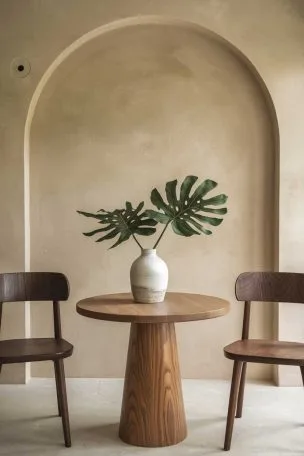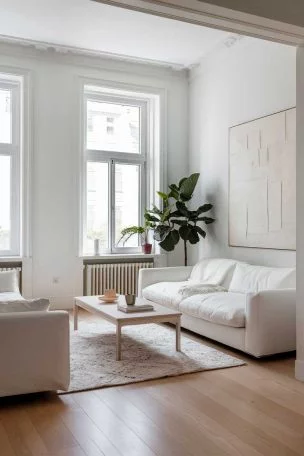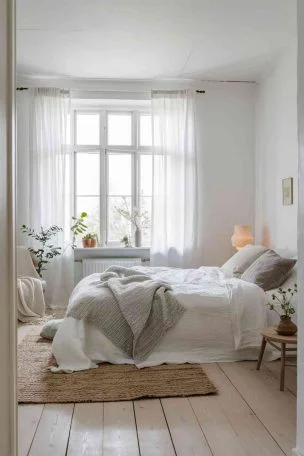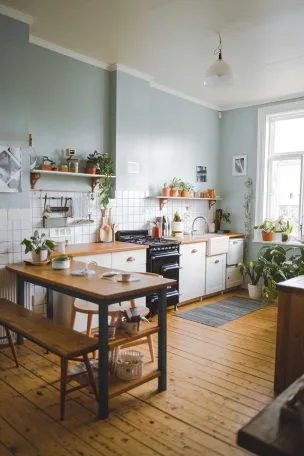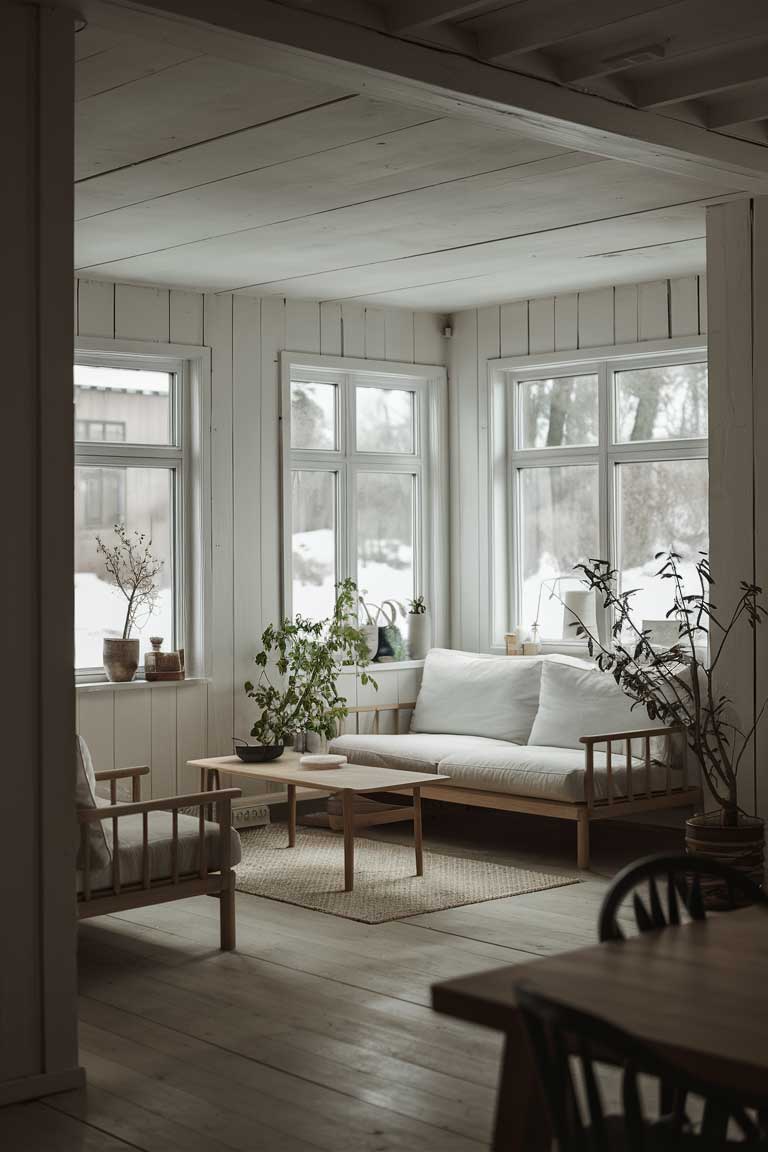Scandinavian minimalism is more than just a design trend—it’s a philosophy that’s shaped the way we think about living spaces and lifestyle choices. Let’s dive into this fascinating approach to design and life, exploring its roots, principles, and enduring appeal.
Historical Context and Evolution
The story of Scandinavian minimalism begins in the early 20th century, emerging as part of the broader modernist movement. But it wasn’t until the 1950s that this design philosophy really took off, capturing the hearts and minds of people far beyond the Nordic countries.
Why did it gain such traction? Well, imagine living in a place where winter nights seem endless and sunlight becomes a precious commodity. That’s the reality in Scandinavian countries, and it played a huge role in shaping this design ethos. The need to maximize light and create comfort in living spaces became paramount, leading to a style that favored simplicity and functionality.
But it wasn’t just about practicality. There was a strong desire to create designs that were not only functional but also beautiful—and, crucially, accessible to everyone. This democratic approach to design set Scandinavian minimalism apart from its predecessors.
As the style evolved, it gained international recognition. Events like the Lunning Prize, which celebrated Scandinavian designers, helped spread the word. Before long, the world was falling in love with this approach that married form and function so elegantly.
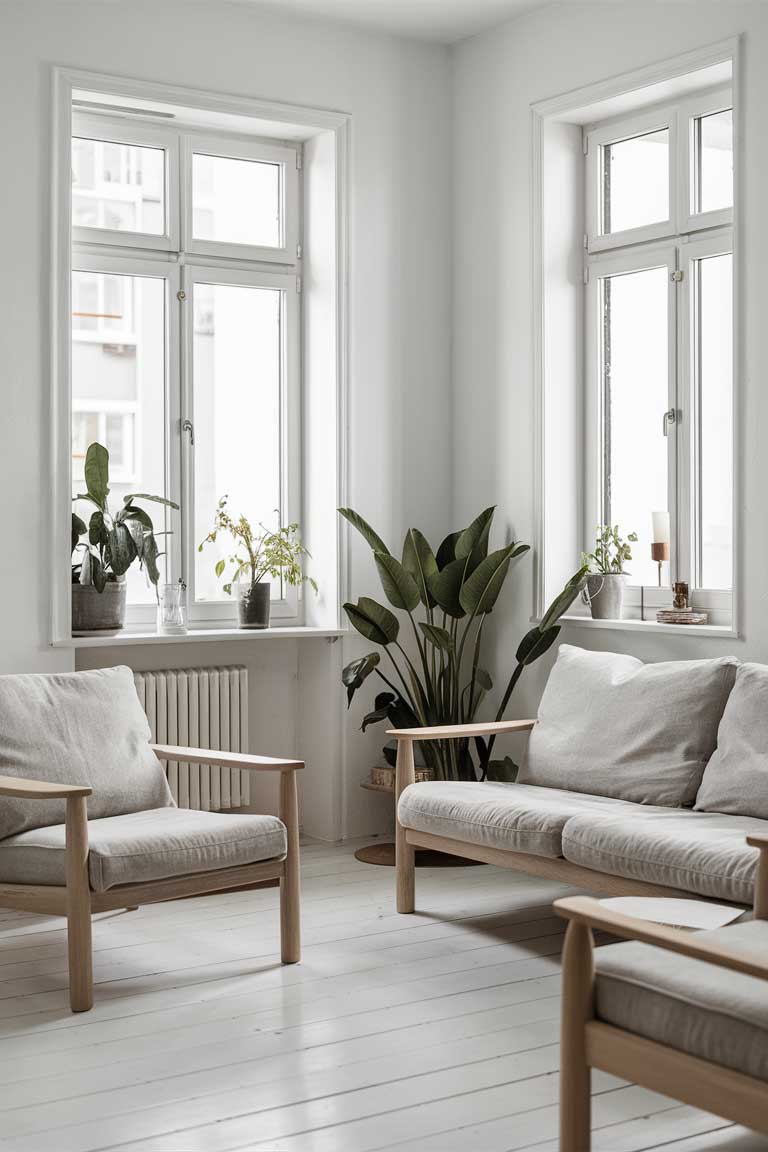
Core Principles and Characteristics
Now that we’ve got the backstory, let’s break down what makes Scandinavian minimalism tick. It’s not just about having less stuff—it’s about creating spaces that work for you and make you feel good.
Simplicity and Functionality
At its heart, Scandinavian minimalism is all about purpose. Every piece of furniture, every decorative item, has a reason for being there. It’s not about filling space—it’s about enhancing it.
You’ll notice clean lines everywhere, from the sleek silhouette of a chair to the smooth surface of a table. This isn’t just for looks—it creates a sense of order and calm. And let’s face it, who couldn’t use a little more of that in their life?
But don’t think this means Scandinavian minimalist spaces are cold or uninviting. Far from it! The focus on functionality actually makes these spaces incredibly comfortable. Everything is where it should be, doing what it should do. It’s like the whole room is giving you a big, organized hug.
Natural Materials
One of the things I love most about Scandinavian minimalism is its use of natural materials. Wood, stone, wool—these aren’t just design choices; they’re a nod to the stunning natural world of the Nordic countries.
This use of natural materials does double duty. First, it brings a sense of the outdoors inside, which is especially important during those long Nordic winters. Second, it adds warmth and texture to spaces that might otherwise feel a bit stark.
And let’s not forget about textiles. Soft cotton throws and cozy wool rugs—these elements add layers of comfort and interest without cluttering up the space. It’s all about creating a tactile experience that invites you to relax and unwind.
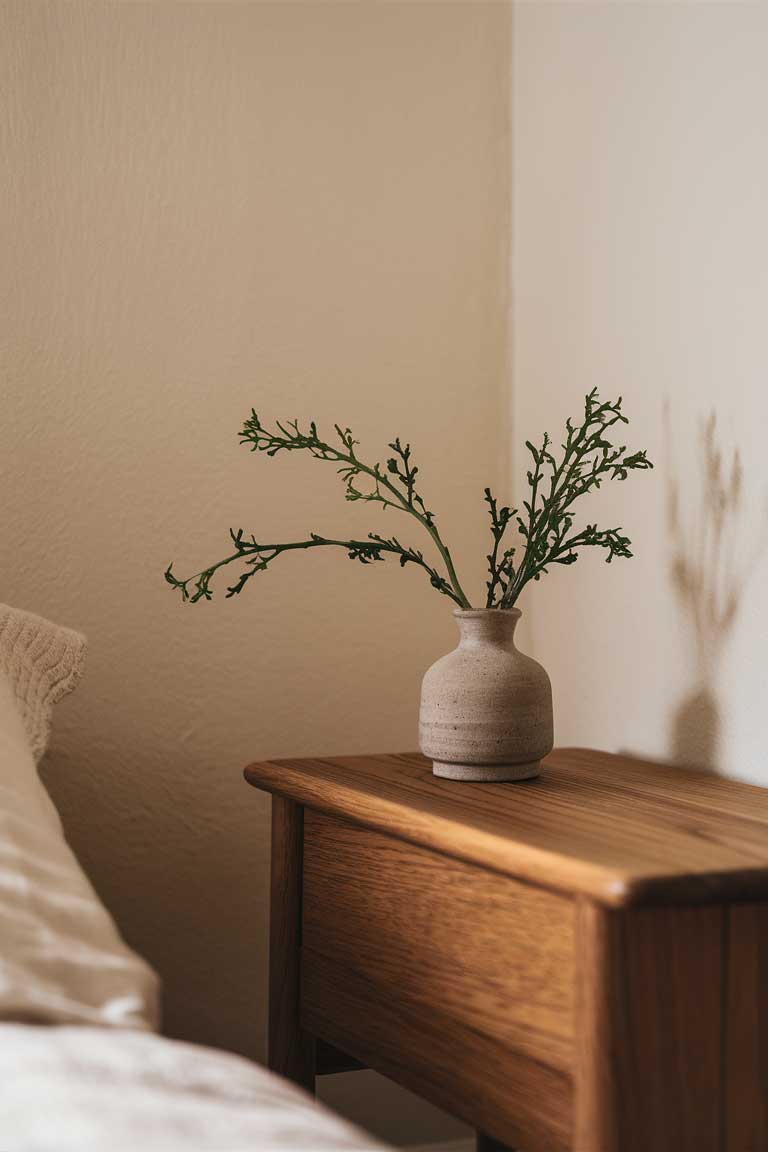
Neutral Color Palette
When you think of Scandinavian minimalism, you might picture lots of white—and you wouldn’t be wrong. But it’s not just about white walls. The color palette of this style is all about soft, soothing tones that create a sense of calm and spaciousness.
Think whites, greys, and soft pastels. These colors aren’t just easy on the eye—they also help to maximize natural light, which is crucial in those Nordic countries where daylight can be in short supply for much of the year.
But don’t think this means Scandinavian minimalist spaces are boring or lacks personality. These neutral backgrounds are the perfect canvas for adding pops of color through artwork, plants, or carefully chosen accessories. It’s all about balance and restraint.
Connection to Nature
Speaking of plants, let’s talk about how Scandinavian minimalism brings the outdoors in. Large windows are a hallmark of this style, creating a seamless connection between interior and exterior spaces. It’s like nature is another design element, constantly changing and adding life to the room.
And it’s not just about the view. Indoor plants are often used to add a touch of green and improve air quality. It’s a simple way to make a space feel more alive and vibrant, even in the depths of winter.
This connection to nature isn’t just aesthetic—it’s deeply rooted in Nordic culture and the idea that humans should live in harmony with their environment. It’s a philosophy that feels more relevant than ever in our increasingly urbanized world.
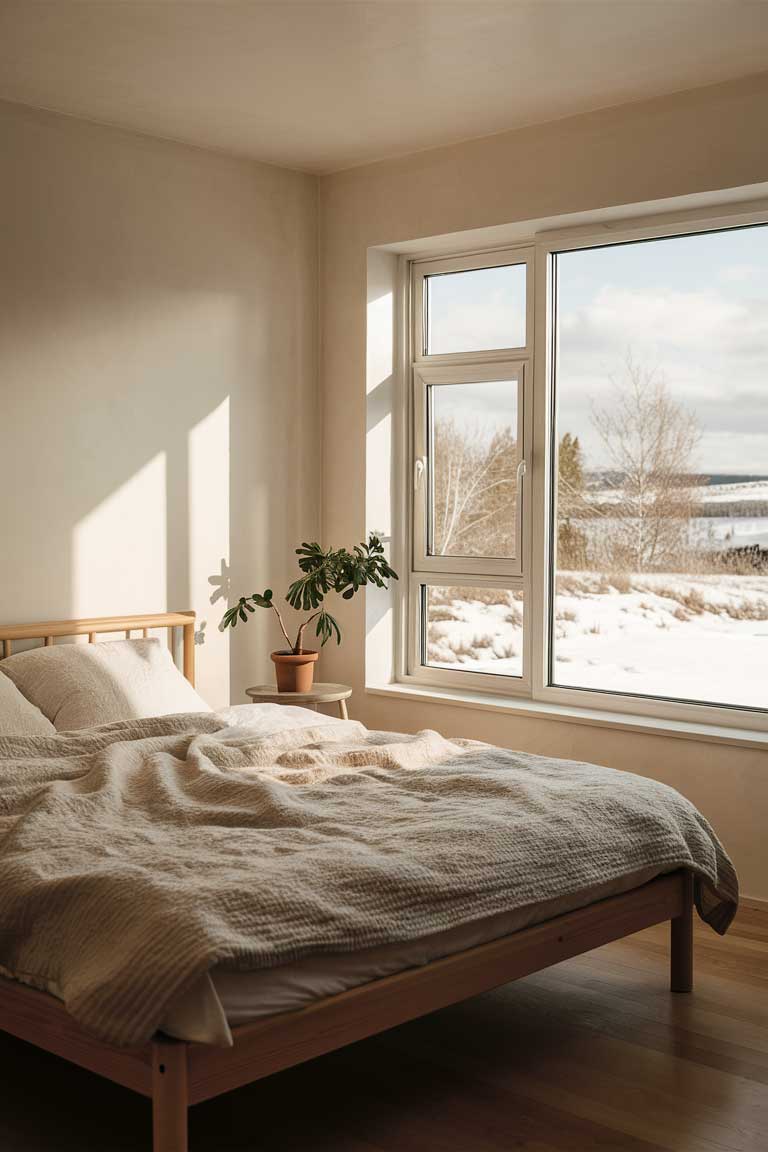
Scandinavian Minimalism vs. Traditional Minimalism
Now, you might be thinking, “Isn’t this just regular old minimalism?” Well, not quite. While Scandinavian minimalism shares some DNA with traditional minimalism, there are some key differences that set it apart.
Focus
The biggest difference is in the overall focus. Traditional minimalism is all about stripping things down to their bare essentials. It’s about having less for the sake of having less. Scandinavian minimalism, on the other hand, is more concerned with creating comfort and warmth within a simplified environment.
It’s not just about getting rid of stuff—it’s about curating your space to enhance your well-being. It’s minimalism with a heart, if you will.
Color Palette
When it comes to color, traditional minimalism often leans towards stark contrasts—think lots of black and white. Scandinavian minimalism, however, prefers softer, nature-inspired tones. It’s less about making a bold statement and more about creating a soothing, harmonious environment.
Materials
Here’s another big difference: while traditional minimalism often embraces industrial or synthetic materials, Scandinavian minimalism is all about natural materials. Wood, wool, cotton—these are the stars of the show in Nordic-inspired interiors.
Aesthetic
Finally, there’s a difference in the overall aesthetic. Traditional minimalist spaces can sometimes feel a bit sharp or clinical. Scandinavian minimalism, in contrast, aims for a cozier, more inviting vibe. It’s clean and uncluttered, sure, but it’s also layered and warm.
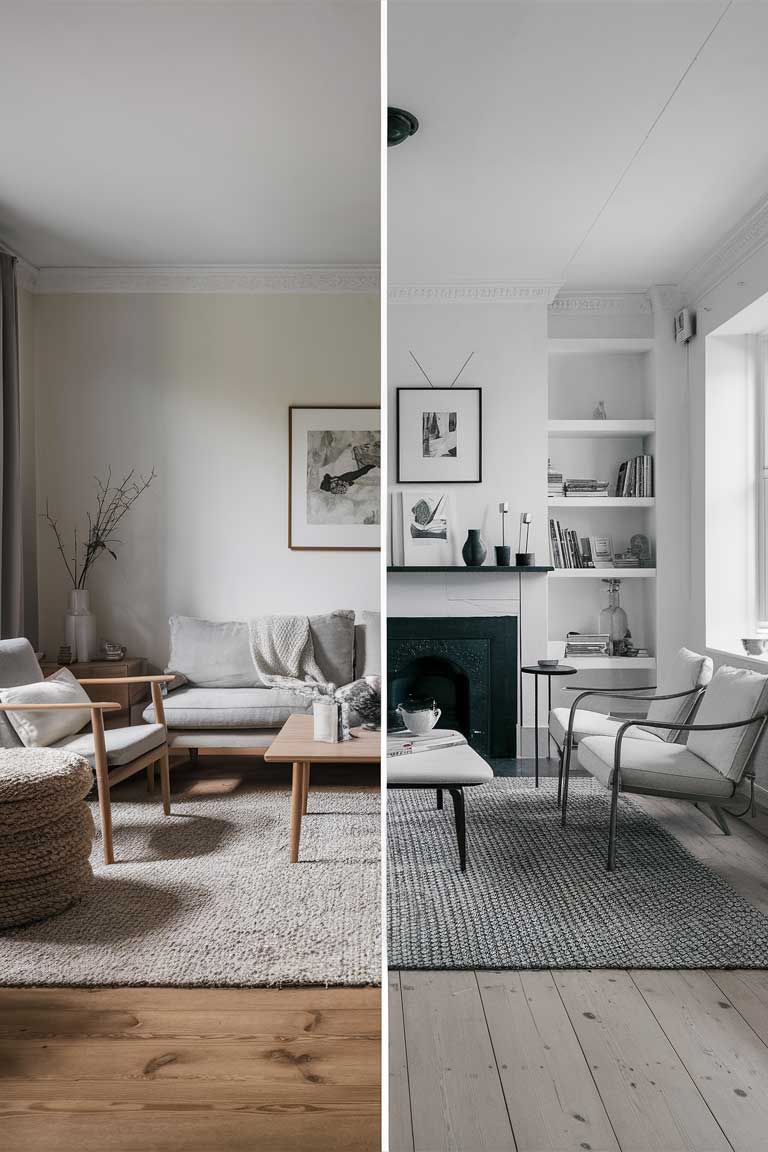
The Hygge Concept in Scandinavian Minimalism
No discussion of Scandinavian minimalism would be complete without talking about hygge. This Danish concept doesn’t have a direct English translation, but it’s all about coziness, contentment, and well-being.
Hygge is what stops Scandinavian minimalism from feeling cold or unwelcoming. It’s the warm glow of candlelight on a winter evening, the soft throw draped over your favorite chair, the mug of hot cocoa shared with friends. It’s about creating moments of comfort and connection within your minimalist space.
In practice, hygge in Scandinavian minimalism might look like:
- Thoughtful furniture arrangements that encourage conversation and relaxation
- Warm lighting that creates a soft, inviting atmosphere
- Cozy textiles like wool blankets and plush cushions
- Natural elements like wood and plants that bring a sense of the outdoors in
It’s this element of hygge that really sets Scandinavian minimalism apart. It’s not just about how your space looks—it’s about how it makes you feel. And that’s something we could all use a little more of in our lives, don’t you think?
Quality and Craftsmanship
Another key aspect of Scandinavian minimalism is its emphasis on quality and craftsmanship. This isn’t a “throw-away” culture—it’s about investing in pieces that will last a lifetime.
In a Scandinavian minimalist home, you’re likely to find furniture and decor items that are well-made and built to last. There’s a focus on timeless design over trendy pieces that will be out of style in a year or two.
This approach aligns beautifully with sustainable practices. By choosing quality items that will stand the test of time, we reduce waste and lessen our environmental impact. It’s a philosophy that feels particularly relevant in our current era of fast fashion and disposable everything.
But it’s not just about durability. There’s a real appreciation for the skill and artistry that goes into creating these pieces. Whether it’s a hand-woven textile or a perfectly proportioned chair, Scandinavian minimalism celebrates the beauty of well-crafted objects.
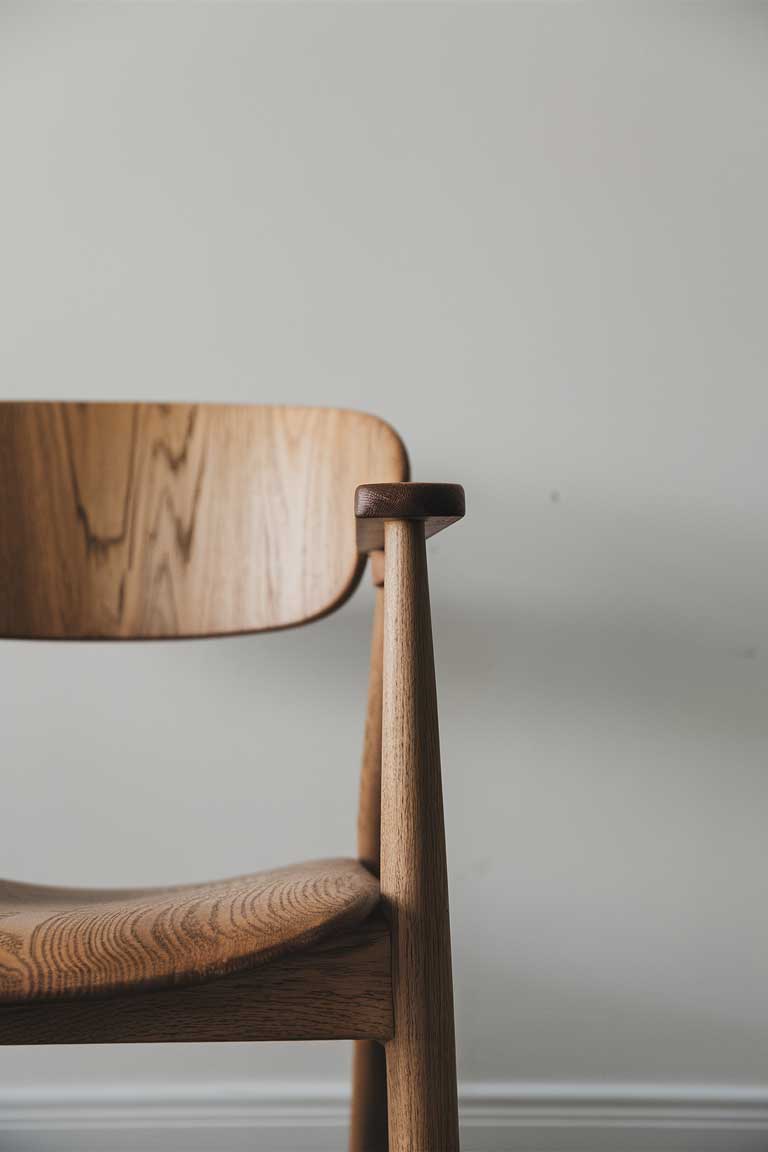
Efficient Use of Space
One of the most practical aspects of Scandinavian minimalism is its approach to space. In a region where urban living spaces can be compact and winters long, making the most of every square foot becomes crucial.
This philosophy manifests in several ways:
- Clever storage solutions: Think built-in cabinets that blend seamlessly with walls, or furniture pieces that do double duty as storage units.
- Multi-functional furniture: A dining table that can be expanded for guests, a sofa that converts into a bed—pieces that adapt to your needs save space and reduce clutter.
- Open floor plans: By removing unnecessary walls and creating fluid spaces, even small apartments can feel spacious and airy.
- Thoughtful furniture placement: Every piece is positioned with purpose, creating clear pathways and functional zones within a space.
The result? Rooms that feel spacious and uncluttered, even when square footage is at a premium. It’s an approach that can make even the coziest studio apartment feel like a palace.
Cultural Significance and Lifestyle
It’s important to understand that Scandinavian minimalism isn’t just about interior design—it’s a reflection of broader cultural values and lifestyle choices in Nordic countries.
This design philosophy embodies ideals like:
- Sustainability: By focusing on quality over quantity and embracing natural materials, Scandinavian minimalism aligns with eco-friendly living.
- Equality: The emphasis on functional, accessible design reflects a societal value of democratic ideals.
- Connection to nature: The incorporation of natural elements and emphasis on light speaks to the Nordic appreciation for the natural world.
- Work-life balance: Creating calm, uncluttered spaces at home supports the Nordic emphasis on quality of life and well-being.
In essence, Scandinavian minimalism isn’t just about how things look—it’s about how we live. It encourages us to focus on what’s truly important, to find joy in simplicity, and to create spaces that support our well-being.
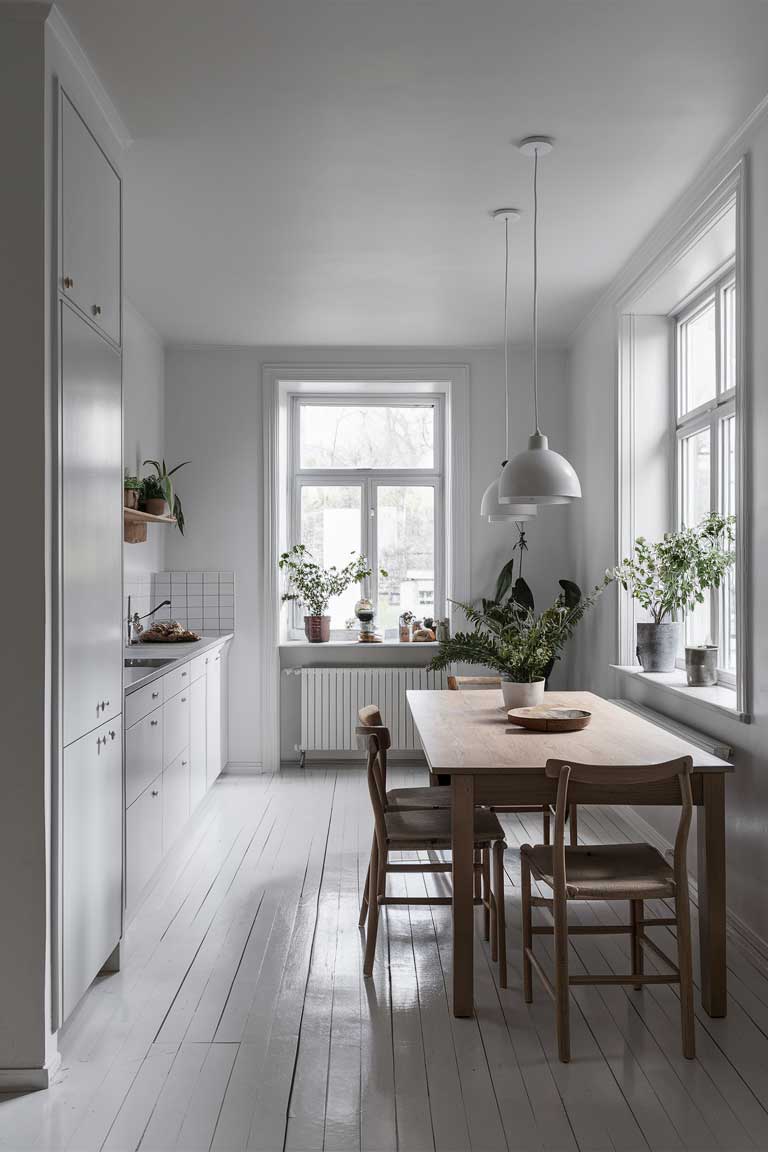
Practical Applications in Modern Interiors
So, how can you bring a touch of Scandinavian minimalism into your own home? Here are a few tips:
- Declutter: This is the first and most important step. Go through your belongings and keep only what you truly need or love.
- Embrace natural light: Remove heavy curtains and opt for sheer window treatments that let in more light.
- Stick to a neutral palette: Paint your walls in soft, light colors and use natural tones throughout your decor.
- Incorporate natural materials: Choose wooden furniture, wool textiles, and stone accents.
- Add plants: Bring in some greenery to connect your space with nature.
- Focus on functionality: Every item should have a purpose. If it’s not useful or doesn’t bring you joy, it probably doesn’t need to be there.
- Create cozy nooks: Remember hygge—add soft textiles and warm lighting to create inviting spaces.
Remember, the goal isn’t to create a carbon copy of a Scandinavian home. It’s about taking these principles and adapting them to your own space and lifestyle. The beauty of Scandinavian minimalism is its flexibility—it can work in a New York apartment just as well as in a Stockholm flat.
Conclusion: The Enduring Appeal of Scandinavian Minimalism
As we’ve explored, Scandinavian minimalism is so much more than just a design trend. It’s a holistic approach to living that prioritizes simplicity, functionality, and well-being. From its historical roots in the Nordic response to long, dark winters, to its modern-day global influence, this philosophy continues to resonate with people around the world.
Why? Perhaps because, in our increasingly complex and cluttered world, there’s something deeply appealing about stripping things back to what really matters. Scandinavian minimalism offers us a way to create spaces that are not only beautiful but also support our well-being and reflect our values.
As we look to the future, it’s clear that the principles of Scandinavian minimalism will continue to evolve and adapt. We may see more integration of smart home technology, for instance, or new sustainable materials that align with the style’s eco-friendly ethos. But at its core, the focus on simplicity, quality, and connection to nature is likely to endure.
In the end, Scandinavian minimalism reminds us that our spaces shape our lives—and that with thoughtful design, we can create environments that bring out the best in us. And really, isn’t that what good design is all about?

